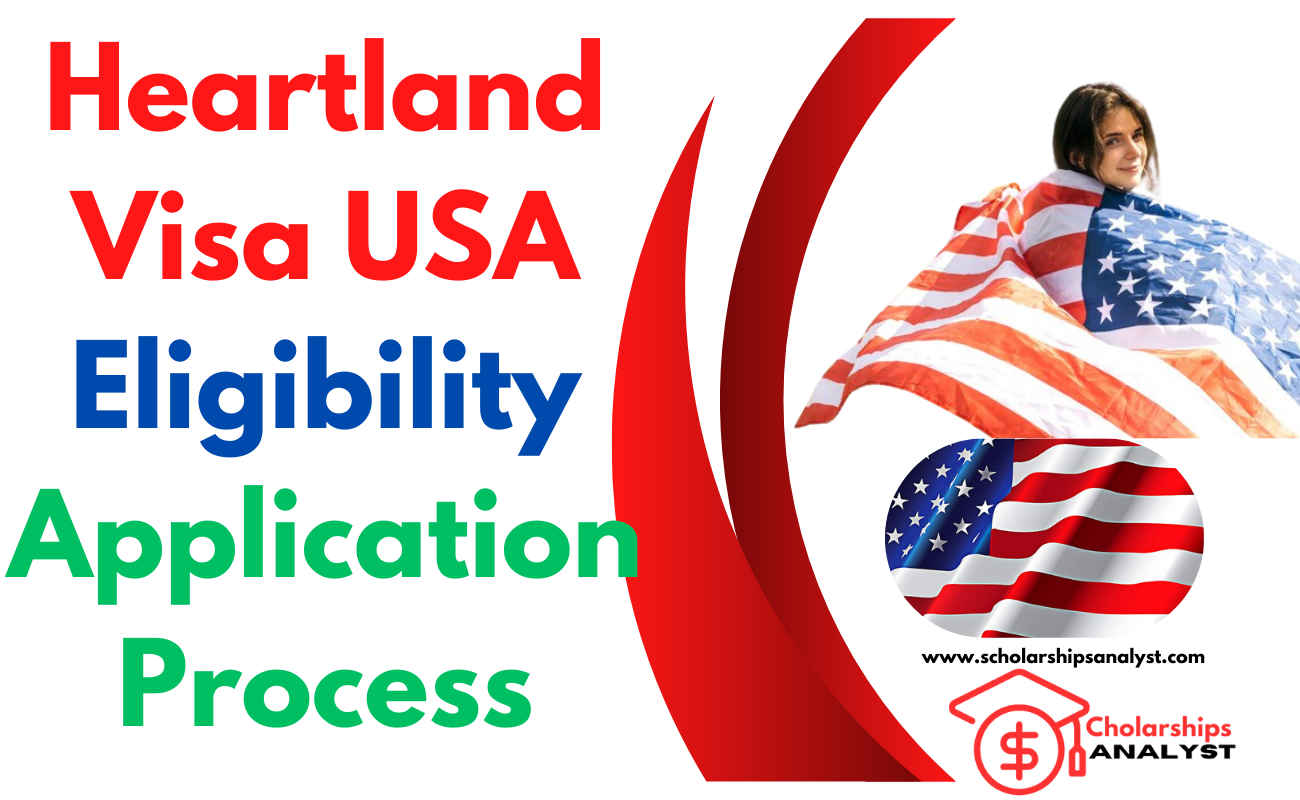Table of Contents
The “Heartland Visa” is a proposed visa category aimed at revitalizing America’s Heartland by attracting skilled immigrants to underpopulated and economically challenged regions in the United States. Although this visa type has been conceptualized rather than fully implemented, it has garnered attention from policymakers and businesses seeking to boost the economic growth of America’s rural and industrial communities. This guide explores the objectives, benefits, eligibility criteria, potential challenges, and future outlook for the Heartland Visa.
1. Introduction to the Heartland Visa
The “Heartland Visa” initiative is a concept aimed at addressing depopulation and economic stagnation in America’s heartland — a term broadly used to describe states in the Midwest and certain parts of the South and Great Plains. The proposal suggests issuing a new visa category to encourage skilled immigrants to settle in rural and underpopulated areas, contributing to their local economies and communities.
While this visa is not officially a part of U.S. immigration law as of now, it has been proposed by think tanks and policymakers as a way to reinvigorate rural areas that have seen a decline in population, job opportunities, and public infrastructure.
2. Purpose and Significance of the Heartland Visa
The Heartland Visa proposal seeks to address several challenges in the United States:
- Population Decline: Many rural regions in the U.S. are experiencing significant population decline, with young residents moving to urban areas for better opportunities.
- Economic Stagnation: Rural and manufacturing areas often lack a skilled workforce, which hampers economic growth.
- Workforce Demand: Industries like agriculture, manufacturing, and healthcare in these regions frequently face labor shortages.
By encouraging skilled immigrants to live and work in these areas, the Heartland Visa aims to:
- Reinvigorate local economies.
- Enhance community development and population stability.
- Support the growth of critical industries in need of skilled workers.
3. Eligibility Requirements for the Heartland Visa
While the specific requirements for the Heartland Visa may evolve based on its implementation, some proposed eligibility criteria include:
a. Educational Qualifications
Applicants are likely to need a minimum level of educational attainment, such as a high school diploma or college degree, depending on the occupation in demand.
b. Skills and Experience
Candidates should possess skills relevant to industries with a workforce demand in the heartland, such as agriculture, manufacturing, healthcare, and information technology.
c. Commitment to Reside in Heartland Regions
Applicants must agree to reside in designated rural or underpopulated areas. This residency requirement is crucial to ensure that the visa fulfills its purpose of reviving America’s heartland.
d. English Language Proficiency
A basic to intermediate level of English proficiency may be required to ensure successful integration into the community and workplace.
e. Financial Stability
Applicants might need to demonstrate financial independence or proof of employment to ensure they can sustain themselves and contribute positively to the economy.
4. Application Process and Steps
Since the Heartland Visa has yet to be formally introduced, this is a tentative outline of a possible application process, likely similar to other employment-based visas.
Step 1: Eligibility Check
Prospective applicants must check eligibility based on skills, education, and other criteria established by the U.S. immigration authorities.
Step 2: Application Submission
Applicants will likely need to submit their visa applications through the U.S. Citizenship and Immigration Services (USCIS) portal, along with supporting documents, proof of job offer, and proof of residency commitment.
Step 3: Interview Process
Like many U.S. visa applications, an interview at the nearest U.S. consulate or embassy might be required to verify eligibility and intent.
Step 4: Approval and Entry to the U.S.
Once approved, immigrants would receive the Heartland Visa, allowing them to enter and reside in designated areas within the U.S.
5. Benefits of the Heartland Visa
a. Economic Revitalization
The Heartland Visa would stimulate local economies by addressing the labor shortages that hinder growth in rural areas.
b. Population Stability and Growth
It could help offset the population decline by attracting new residents, leading to more robust community structures and local businesses.
c. Opportunities for Immigrants
This visa offers a unique path to live and work in the U.S., providing immigrants a chance to contribute to less populated areas with the potential for career growth.
d. Enhanced Cultural Exchange
The presence of immigrants can lead to greater cultural diversity and promote understanding in local communities.
6. Challenges and Controversies
a. Integration Issues
Some may argue that immigrants may struggle to integrate into small towns due to cultural and social differences, potentially leading to isolation.
b. Economic Dependency on Immigrants
Critics contend that this visa may create an economic model too reliant on immigration for stability, risking sustainability.
c. Implementation and Compliance
Ensuring that visa holders adhere to the residency requirements may pose enforcement challenges.
d. Local Community Concerns
Some residents may express apprehension toward new immigrants, fearing cultural shifts or competition for jobs and resources.
7. Comparison with Similar Visa Programs
The Heartland Visa concept shares similarities with other regional or skilled-based visas around the world:
- Canada’s Rural and Northern Immigration Pilot: Designed to attract skilled immigrants to Canada’s rural and northern communities.
- Australia’s Skilled Regional Visa: Incentivizes immigrants to settle in regional Australia to address labor shortages.
- New Zealand’s Regional Visa Programs: Focuses on attracting immigrants to non-metropolitan areas to support regional development.
8. The Future of the Heartland Visa
The Heartland Visa is still in the conceptual phase, but interest from policymakers suggests it may gain momentum. The visa’s future likely depends on:
- Political Willpower: Support from lawmakers is crucial to implement this program.
- Community Involvement: Success relies on the ability of communities to welcome and integrate immigrants effectively.
- Economic Need: As labor shortages persist, the Heartland Visa could become a practical solution.
9. Conclusion
The Heartland Visa USA offers a promising solution to the economic and population challenges in rural America. By attracting skilled immigrants to underserved areas, the visa could pave the way for revitalized communities, stronger local economies, and a more balanced population distribution. Although there are valid concerns, with careful planning and community engagement, the Heartland Visa has the potential to positively impact both America’s heartland and the immigrants who call it home.
Frequently Asked Questions (FAQs) About the Heartland Visa
Q1: What is the Heartland Visa?
The Heartland Visa is a proposed U.S. visa program aimed at attracting skilled immigrants to live and work in underpopulated, economically struggling regions within America’s heartland. The initiative seeks to revitalize these areas by encouraging immigrants to help address labor shortages and contribute to local economic growth.
Q2: Is the Heartland Visa officially available?
No, the Heartland Visa is still a concept and has not yet been made available by U.S. immigration authorities. It has been discussed as a potential solution for the challenges facing rural and industrial regions in the U.S., but it has not been implemented into law.
Q3: Who would be eligible for the Heartland Visa?
While specific eligibility criteria would be outlined if the visa becomes official, it is expected to target skilled immigrants with relevant educational backgrounds, work experience in sectors like agriculture, manufacturing, and healthcare, and a commitment to reside in designated rural or heartland regions of the United States.
Q4: What are the main benefits of the Heartland Visa for immigrants?
The Heartland Visa would offer immigrants a unique opportunity to live and work in the United States, specifically in communities that are eager for new residents. It could provide pathways for career advancement, community involvement, and a chance to contribute to economic growth in underserved regions.
Q5: How long would Heartland Visa holders be required to stay in designated areas?
Although specific requirements are yet to be defined, it is anticipated that visa holders would need to reside in the designated heartland areas for a certain period, likely several years, before being eligible to relocate to other parts of the U.S.
Q6: Would Heartland Visa holders be allowed to bring their family members?
If the Heartland Visa program is implemented, it is likely that family reunification guidelines would be established, allowing visa holders to bring immediate family members. Details would depend on the final regulations set by U.S. immigration authorities.
Q7: What types of jobs would be available to Heartland Visa holders?
The visa is expected to target sectors experiencing labor shortages in rural areas, including agriculture, healthcare, manufacturing, information technology, and various skilled trades. Availability would depend on regional demand and local economic needs.
Q8: How does the Heartland Visa differ from other U.S. visa programs?
Unlike other U.S. work visas, the Heartland Visa would be specifically tied to residency in underpopulated areas within America’s heartland. Its purpose is to encourage skilled immigration to regions that need economic support, which is distinct from visas that allow holders to reside in any part of the U.S.
Q9: Will Heartland Visa holders have a path to permanent residency?
If implemented, it’s possible the Heartland Visa could offer a path to permanent residency (Green Card) after meeting certain conditions, such as the duration of stay and adherence to residency requirements. Details would depend on legislative decisions.
Q10: What challenges might Heartland Visa holders face in rural areas?
Challenges could include limited access to social services, fewer job options outside specific industries, and cultural differences that may require adjustment. Efforts would likely be made to support integration and provide resources to ease the transition for immigrants.
Q11: How will the success of the Heartland Visa be measured?
Success could be measured through various indicators, such as economic growth in targeted regions, population stability or growth, increased job creation, and positive community feedback. These metrics would help determine if the visa meets its objectives.
Q12: How is the Heartland Visa similar to visa programs in other countries?
The Heartland Visa is similar to Canada’s Rural and Northern Immigration Pilot and Australia’s Skilled Regional Visa, both of which are designed to attract skilled immigrants to underpopulated or economically struggling areas to boost local economies.
Q13: Is there political support for the Heartland Visa?
There has been growing interest among policymakers and think tanks, particularly as labor shortages persist and economic disparities between urban and rural areas become more pronounced. However, formal support would be needed from Congress to establish this visa.
Q14: Could Heartland Visa holders eventually move to urban areas?
It’s possible that after fulfilling a designated period of residency in heartland areas, visa holders could have the freedom to relocate to other parts of the U.S. This would depend on the terms and conditions set by the final visa regulations.
Q15: Where would applicants apply for the Heartland Visa?
If implemented, applications would likely be processed through the U.S. Citizenship and Immigration Services (USCIS) and U.S. embassies or consulates, similar to other work visa applications.




Leave a Comment